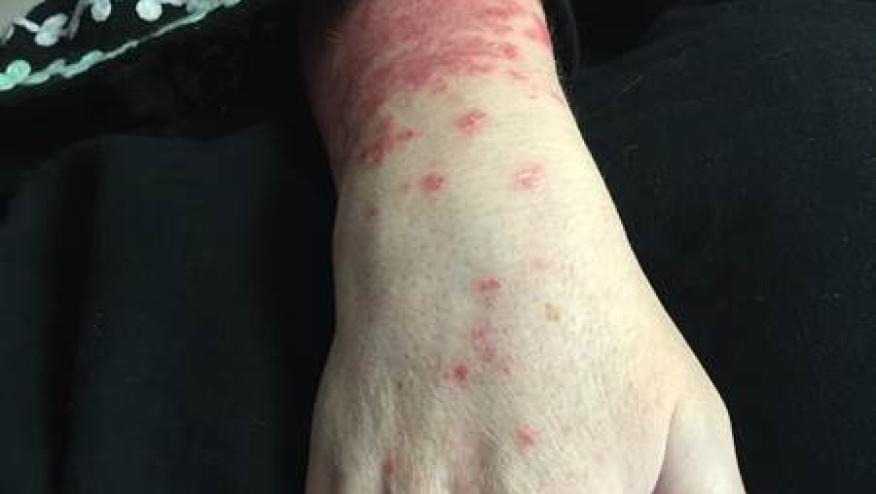Combination treatments in Psoriatic Arthritis Save

Psoriatic arthritis (PsA) is a complex inflammatory arthritis with multiple domains and associated comorbidities. Despite the advances in the treatment of PsA with biologic (bDMARD) and targeted synthetic (tsDMARD), less than half of patients with this condition achieved remission or low disease activity. Combination DMARD treatment is often used in order to achieve remission or minimal disease activity. The standard practice is to use a conventional synthetic (csDMARD) with a bDMARD.
The use of the combination of bDMARD with a tsDMARD such as a JAKi or TYK2i is a new order in the treatment of PsA.
At EULAR 2025, Lucas Ribeiro A et al, Abst#OP0090 presents their experience of using dual bDMARD with JAKi or TYK2i. This observational study with short-term follow up, reviewed the charts for the efficacy and safety of this combination treatment. There were 22 patients in the study, equally split between male and female and with a total exposure of 8.5 to 10.5 patient years. The most common combination was IL-17i + TYK2i, followed by IL-23i +TYK2i and IL-17i + JAKi. There were also some patients on the combination of bDMARD + Apremilast (APR), such as IL-17i+APR, IL-23i+APR and TNFi+APR. Short-term responses were observed in both musculoskeletal and skin domains. This included the tender, swollen joint counts, disease activity in PsA (DAPSA), psoriasis area and severity index (PASI), body surface area (BSA), and patient-reported outcomes (numerical rating scale for pain, skin, and patient global).
The overall safety profile of combination bDMARD with JAKi, TYK2i and APR was favourable. Infections such as upper respiratory infections and stomatitis were manageable, not requiring hospitalisation or withdrawal of treatment. This study, acknowledging its limitations with small sample size and short-term follow up, gives us some further real world experience for the use of combination dDMARDs + tsDMARDs in refractory PsA.
The theme of combination therapy in PsA also extends to early intensive treatment. This is compared to the standard step up treatment in PsA. At #EULAR2025, Massa S et al, Abst#OP0089 report on the results of the Severe Psoriatic arthritis – Early intervEntion to control Disease (SPEED) trial. This trial was to compare PASDAS response in PsA patients with poor prognostic factors treated with standard step-up conventional systemic disease-modifying anti-rheumatic drugs (csDMARDs), combination csDMARDs or early tumour necrosis factor inhibitor (TNFi) induction therapy.There 192 patients in the study with 52% being male.
The mean PASDAS was lower in both the early TNFi (3.7) and combination csDMARDs (4.1) groups compared to the step-up csDMARDs (4.8). The early TNFi was superior to the step-up by -1.09 of the PASDAS. This benefit was sustained at 48 weeks. The combination csDMARD was also superior to step-up by -0.69 in the PASDAS.
These studies show that initial intensive therapy with early biologics or combination DMARDs are superior for rapid control of disease for patients with early moderate-severe PsA. In patients with late and refractory PsA, combination bDMARD+tsDMARD is a possible option. Longer term follow up of patients on these combined regimes will be needed to assess the safety and efficacy of treatments. The aim remains to achieve remission and low disease activity in PsA in order to improve long-term outcomes.










If you are a health practitioner, you may Login/Register to comment.
Due to the nature of these comment forums, only health practitioners are allowed to comment at this time.